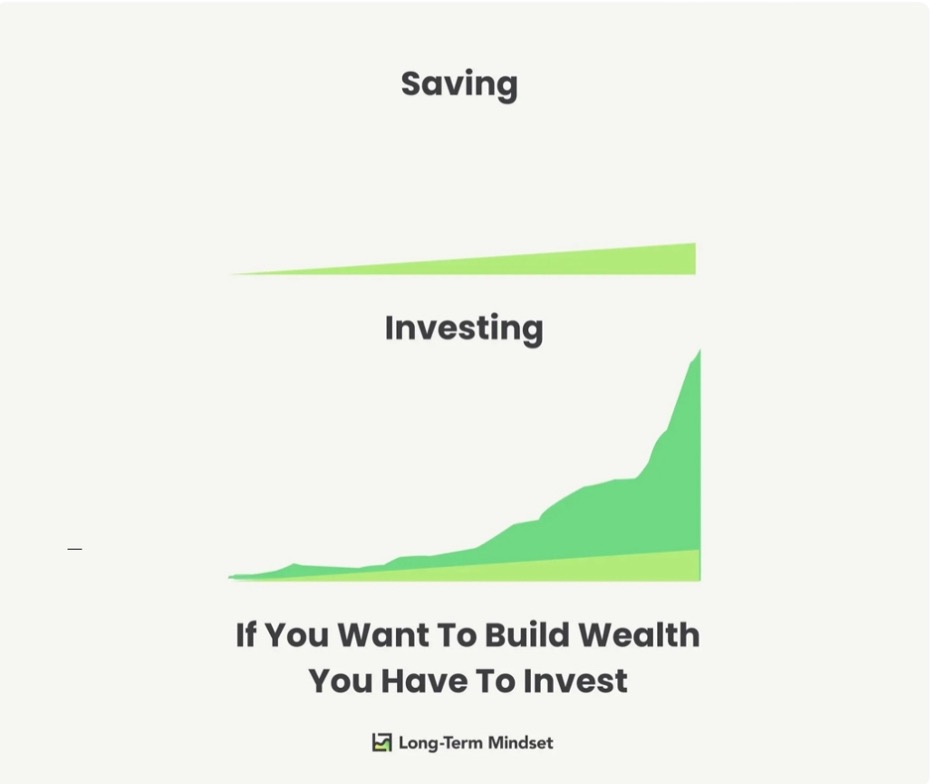Saving versus Investing

Saving is the foundation of financial security. It’s where most people start. You set money aside for emergencies, for peace of mind. But there’s a limit to how far saving can take you.
This visual perfectly captures a critical truth: saving alone won’t make you wealthy. The line representing savings is steady, but flat. It grows at a slow pace, limited by the interest rates on savings accounts. In today’s world, those rates often barely keep up with inflation. That means your purchasing power erodes over time. In short, no protection of purchasing power. Real capital protection is then about protecting this purchasing power. But with savings alone this is not possible.
Investing, on the other hand, opens up a world of possibilities. The curve in the visual shows exponential growth. This is where real wealth building happens. When you invest, your money starts working for you. Initially you feel like nothing is happening. Over time, the effects of compounding take over. Your returns generate more returns, creating a snowball effect.
The earlier you start, the more time your investments have to grow. It’s a long-term mindset. There are no shortcuts, but the rewards are far greater than just saving.
The key message here is balance. Saving is essential for short-term goals and security. Investing is crucial for long-term wealth building. Together, they create financial stability and the opportunity for growth.
If you want to build wealth, you have to invest. Saving alone won’t get you there. Embrace the power of investing, and let time and compounding work their magic.





 and then tap on
and then tap on 

0 Comments